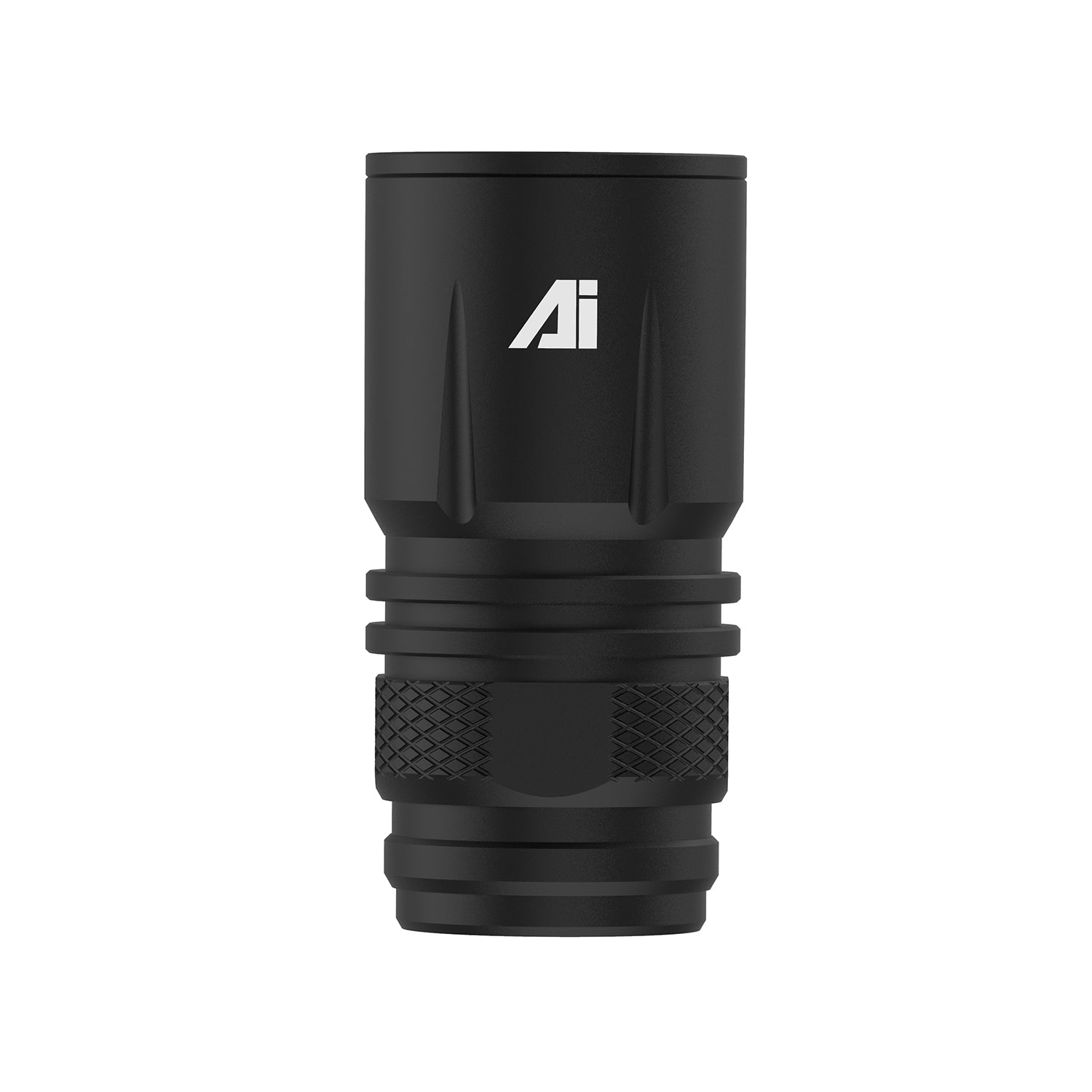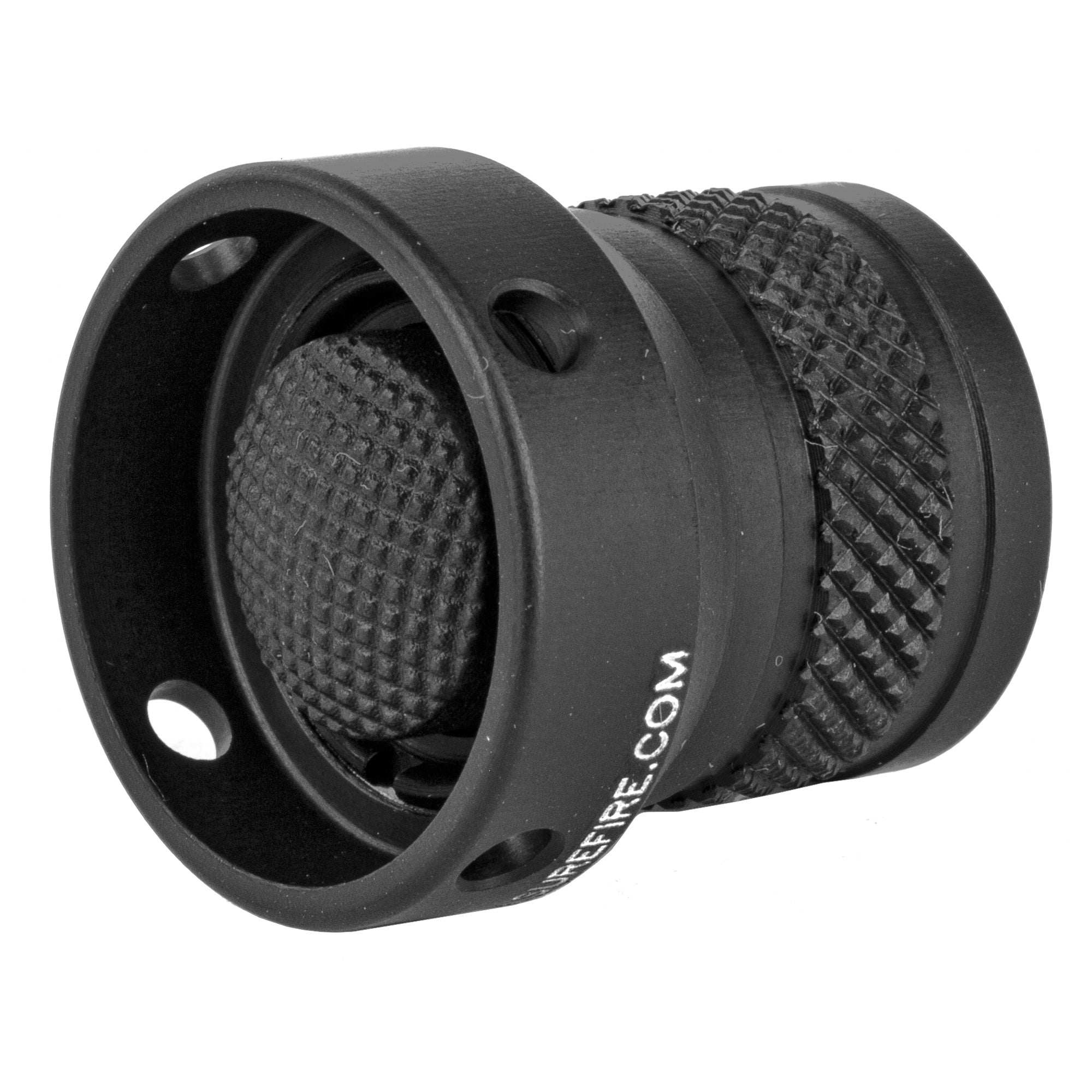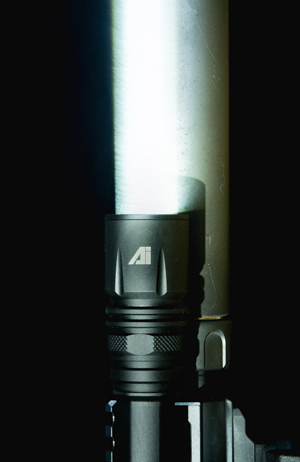Thyrm CellVault XL Battery Storage
The CellVault XL is the large version of the CellVault. Like the original CellVault, it protects batteries and other critical gear while keeping it accessible and organized. Use the integrated webbing clip to access the CellVault’s contents without removing it, or you can quickly detach it for more control. The CellVault XL has twice the capacity of the original CellVault, with a removable inner divider.
The CellVault XL easily attaches to M.O.L.L.E., webbing, and straps, and features lanyard loops at both ends, for more attachment options. It features a slim vertical profile that utilizes 1 M.O.L.L.E. webbing column, giving you more room for other gear including first aid kits, ammo, and tools.
The CellVault XL’s internal divider can keep CR123 batteries inside secure even when the CellVault XL is inverted. Just squeeze the front and back of the tube to release CR123s.
The CellVault’s waterproof, dustproof, durable exterior keeps your essentials safe and accessible, helping you be prepared for whatever comes your way.
A CellVault XL can store:
• Two 18650 batteries (with CellVault XL divider removed)
• Four AA batteries
• Six CR123 batteries
• Eight AAA batteries
• Small survival gear such as lighters, hooks and line, a light stick, a compass, and lip balm
• First aid gear including hemostatic clotting agents, tweezers, and bandages
• Consumables* such as medication, instant coffee packets, electrolyte powder, candy
• Valuables such as emergency money, a flash drive, and keys
• Cigar/Cigarettes/chewing tobacco
• Sewing kit
Use a different color CellVault to contain different critical gear. The Clear-Red CellVault XL is perfect for first aid supplies. CellVault XL storage comes in Black, Olive Drab, Rescue Orange, Flat Dark Earth, Urban Grey, Clear-Black (clear body, black lid/hinge), and Clear-Red (clear body, red lid/hinge).
*Before storing consumables (medication, snacks) in the CellVault, wash it thoroughly and consider using a food-safe plastic bag. A test tube or bottle brush can be used to clean it. The CellVault is made with food-safe thermoformed plastic.
The CellVault is not designed to be waterproof under prolonged submersion; it is not designed for diving. Users should check the lip and o-ring of the CellVault for debris or wear that could prevent it from being waterproof over time.
Looking for a smaller, more waterproof version that fits 18650s? Try CellVault-18 Rechargeable Battery Storage.
Designed and manufactured in the USA.


What is Proposition 65?
- Proposition 65 requires businesses to provide warnings to Californians about significant exposures to chemicals that cause cancer, birth defects or other reproductive harm. These chemicals can be in the products that Californians purchase, in their homes or workplaces, or that are released into the environment. By requiring that this information be provided, Proposition 65 enables Californians to make informed decisions about their exposures to these chemicals.
- Proposition 65 also prohibits California businesses from knowingly discharging significant amounts of listed chemicals into sources of drinking water.
- Proposition 65 requires California to publish a list of chemicals known to cause cancer, birth defects or other reproductive harm. This list, which must be updated at least once a year, has grown to include approximately 900 chemicals since it was first published in 1987.
- Proposition 65 became law in November 1986, when California voters approved it by a 63-37 percent margin. The official name of Proposition 65 is the Safe Drinking Water and Toxic Enforcement Act of 1986.
What types of chemicals are on the Proposition 65 list?
The list contains a wide range of naturally occurring and synthetic chemicals that include additives or ingredients in pesticides, common household products, food, drugs, dyes, or solvents. Listed chemicals may also be used in manufacturing and construction, or they may be byproducts of chemical processes, such as motor vehicle exhaust.
What does a warning mean?
If a warning is placed on a product label or posted or distributed at a workplace, a business, or in rental housing, the business issuing the warning is aware or believes that it is exposing individuals to one or more listed chemicals.
By law, a warning must be given for listed chemicals unless the exposure is low enough to pose no significant risk of cancer or is significantly below levels observed to cause birth defects or other reproductive harm.
What does the phrase “known to the State of California to cause [cancer] [birth defects or other reproductive harm]” in a Proposition 65 warning actually mean?
Under the Proposition 65 statute, “known to the state to cause [cancer] [birth defects or other reproductive harm]” means the chemical has been added to the Proposition 65 list by one of four listing mechanisms.
Who administers Proposition 65?
The Office of Environmental Health Hazard Assessment (OEHHA) administers the Proposition 65 program. OEHHA, which is part of the California Environmental Protection Agency (CalEPA), determines in many cases whether chemicals meet the scientific and legal requirements for placement on the Proposition 65 list, and administers regulations that govern warnings and other aspects of Proposition 65.
Who enforces Proposition 65?
The California Attorney General's Office enforces Proposition 65. Any district attorney or city attorney (for cities whose population exceeds 750,000) may also enforce Proposition 65. In addition, any individual acting in the public interest may enforce Proposition 65 by filing a lawsuit against a business alleged to be in violation of this law.
Lawsuits have been filed by the Attorney General's Office, district attorneys, consumer advocacy groups, and private citizens and law firms.














